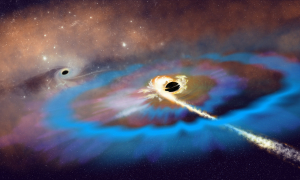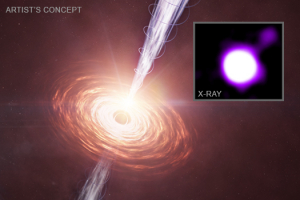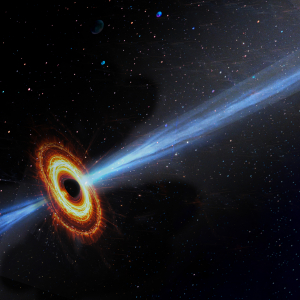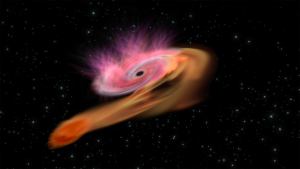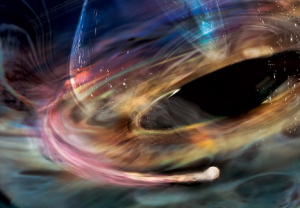An international team of astronomers has discovered the first radio-bright tidal disruption event (TDE) occurring outside a galaxy’s center using the U.S. National Science Foundation National Radio Astronomy Observatory (NSF NRAO) Very Large Array (NSF VLA) and Atacama Large Millimeter/submillimeter Array (ALMA), along with several partner telescopes,. The event, designated AT 2024tvd, revealed the fastest-evolving radio signals ever observed from this type of cosmic catastrophe.
Astronomers Catch Supermassive Black Hole in the Act of “Waking Up”
Astronomers using the U.S. National Science Foundation’s Very Long Baseline Array (NSF VLBA) and U.S. National Science Foundation’s Very Large Array (NSF VLA) have caught a supermassive black hole in the act of awakening from a long slumber, providing an unprecedented glimpse into the earliest stages of black hole activity.
NASA’s Chandra and the U.S. National Science Foundation Very Large Array See Surprisingly Strong Black Hole Jet at Cosmic “Noon”
Astronomers used Chandra and the U.S. National Science Foundation Karl G. Jansky Very Large Array (NSF VLA) to study this black hole and its jet at a period they call “cosmic noon,” which occurred about three billion years after the universe began.
Black Hole Jets Reveal New Insights into the Most Powerful Phenomena in the Universe
An international team of astronomers has made significant strides in understanding the mysterious jets emanating from supermassive black holes…
NSF VLA Contributes Crucial Puzzle Piece to ‘Peculiar’ High Energy Transient
High-energy transient signals are most often determined to be gamma-ray burst events, but the recently-launched Einstein Probe has expanded astronomers’ ability to quickly respond to similar signals occurring at X-ray wavelengths.
Astronomers Catch Unprecedented Features at Brink of Active Black Hole
International teams of astronomers monitoring a supermassive black hole in the heart of a distant galaxy have detected features never seen before using data from NASA missions and other facilities including the National Science Foundation (NSF) National Radio Astronomy Observatory (NSF NRAO) Very Long Baseline Array (VLBA).






